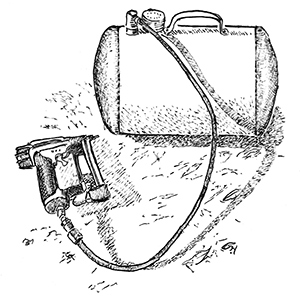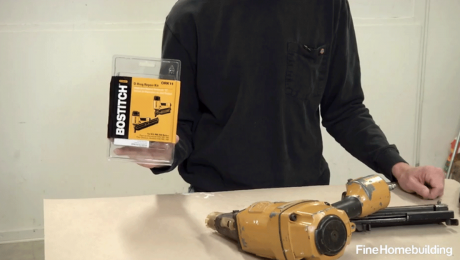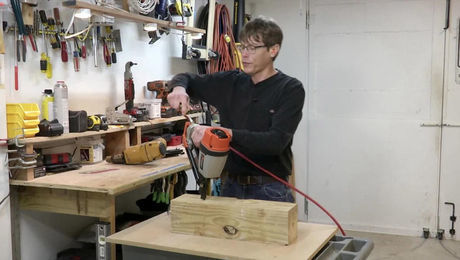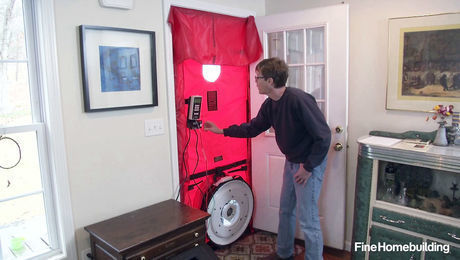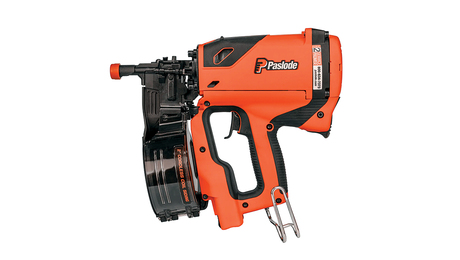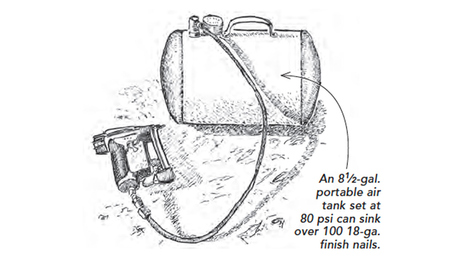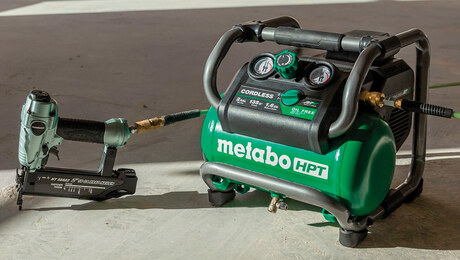Air Hoses: The Lifeline of Your Pneumatic Tools
The right one should fit your tools, your budget, your work, and even the weather outside.
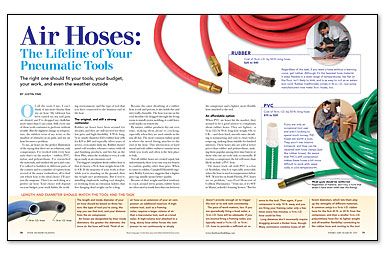
Synopsis: An air hose might not be the most glamorous component of a tool kit, but for many builders, it’s a vital player in any construction job. After researching the market and talking to builders across the country, FHB editor Justin Fink learned that there is no all-around perfect air hose. The optimal choice depends on the tool being used with the hose, the budget, the builder’s work habits, and the working environment. Air hoses are made either of rubber, PVC, nylon, or polyurethane; each material has assets and liabilities depending on where it is used. This article includes sidebars on job-site air-hose repair, hose diameter, and metal fittings for air hoses.
Magazine extra: Watch Justin Fink explain the differences between air-hose materials and demonstrate three easy fixes that can make a damaged hose as good as new.
Of all the tools I use, I can’t think of any more finicky than my air hose. My tablesaw has been rained on, my nail guns are dented, and I’ve dropped my chalkline more times than I can count. Still, every one of those tools continues to perform without trouble. But the slightest change in temperature, the subtlest twist of my wrist, or the smallest of obstacles in its path, and my air hose becomes a problem.
To me, air hoses are the perfect illustration of the saying that there are no solutions, only compromises. I’ve worked with every hose style that’s on the market — rubber, PVC, nylon, and polyurethane. I’ve researched the materials, and studied the pros and cons. I’ve talked to builders in different parts of the country and to a number of experts from several of the major toolmakers, all to find out which hose is the ideal choice. I’ll save you the suspense: There’s no such thing as a perfect air hose. Your choice will depend on your budget, your work habits, the working environment, and the type of tool that you have connected to the business end of the hose.
The original, and still a strong contender
Rubber air hoses have been around for decades, and they are still favored for their low price and high durability. A 50-ft.-long, 3⁄8-in.-inside-diameter (I.D.) rubber hose sells for $20 to $40 and typically offers years of service, even under daily use. Rubber doesn’t mind cold weather, tolerates contact with oil and finishing products, and lies flat on the floor. Plus, when the workday is over, it coils up as easily as an extension cord.
The biggest complaint about rubber hose is that it’s heavy; a 50-ft. hose weighs from 6 lb. to 8 lb. If the majority of your work is done while you’re standing on the ground, then the weight isn’t problematic. But if you’re installing clapboards, nailing roof shingles, or working from an extension ladder, that free-hanging dead weight can be a drag.
Because the outer sheathing of a rubber hose is soft and porous, it also holds dirt and isn’t really cleanable. The hose you use on the roof shouldn’t be dragged through the living room to install crown molding; it could leave scuff marks on trimwork.
By nature, rubber products dry out over time, making them prone to cracking, especially when they are used outside in the sun all day. The most common failure point is where the metal fitting attaches to the end of the hose. This intersection of hard metal and soft rubber endures constant stress while you work and often is the first place to leak.
Not all rubber hoses are created equal, but unfortunately, there is no easy way for buyers to confirm quality, other than price. When it comes to rubber, Campbell Hausfeld engineer Bobby Lawrence suggests that a higher price tag usually means better quality.
For more photos and details, click the View PDF button below:





